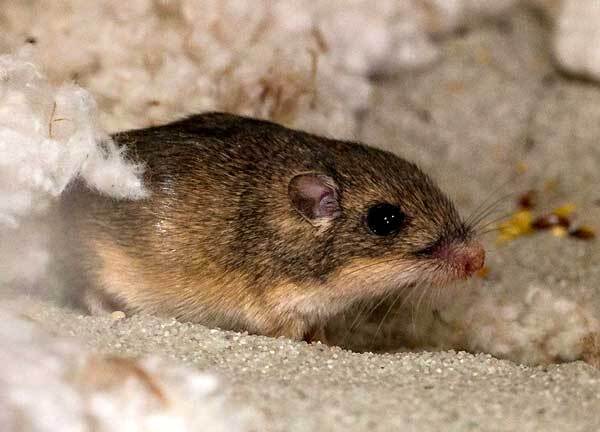Happy News For a California Species Once Thought Extinct

A Southern California mouse species once feared extinct has some good news to share: its numbers are increasing... at least in captivity.
A litter of four Endangered Pacific pocket mice was born at the San Diego Zoo this past weekend, with another litter expected this weekend. The births took place under the care of the San Diego Zoo Institute for Conservation Research, which is running a captive breeding program for the pocket mouse in cooperation with the U.S. Fish and Wildlife Service.
The happy mother who gave birth to last weekend's pups is the first Pacific pocket mouse born as part of the captive breeding program, according to Zoo officials.
Pacific pocket mice, Paragnathus longimembris pacificus, historically ranged from El Segundo to the Mexican border in California, inhabiting dunes, river deltas, and other sandy soils close to the coast. The mice preferred areas of open vegetation, where their preferred food, seed-bearing grasses, had enough room to grow. That's a habitat type that's long been coveted by developers, of course, and almost all of the known populations of the species were displaced by urban and suburban development in the second half of the 20th century.
So much damage was done to the Pacific pocket mouse's habitat that by the 1980s, the species was suspected to have gone extinct. In 1993 a small population was rediscovered around the Dana Point Headlands, and USFWS granted the mouse an emergency listing as Endangered in 1994.
Two more populations subsequently found in Camp Pendleton. But before the Camp Pendleton discovery, the continuing existence of the Dana Point mice seems to have driven at least one Dana Point local to threaten to exterminate the species once and for all. In 1994, USFWS explained that it wouldn't be designating critical habitat for the pocket mice since that would pretty much draw a bullseye on the species:
A communication has been received by the Service that effectively threatens the only known, confirmed population of the species. This threat was received from an individual who was apparently incensed at the emergency listing of the species. On the basis of this kind of activity, the Service finds that publication of critical habitat descriptions and maps would likely make the species more vulnerable to activities prohibited under section 9 of the Act.
Section 9 is the part of the Endangered Species Act that makes it illegal to kill listed species.
Since 1994, the Dana Point population's habitat has been protected and fenced off, no more threats have been received, and those two other populations of the mice have been found just southeast on land protected by the Marine Corps. That lessened vulnerability prompted the Center for Biological Diversity, the Endangered Habitats League, and the National Resources Defense Council to petition in 2000 that critical habitat for the mouse be designated.
The petitioners are still waiting for USFWS to act on that. In the meantime, until there's increased protection for the habitat the mice depend on, the new captive litters at the San Diego Zoo are good news indeed.


